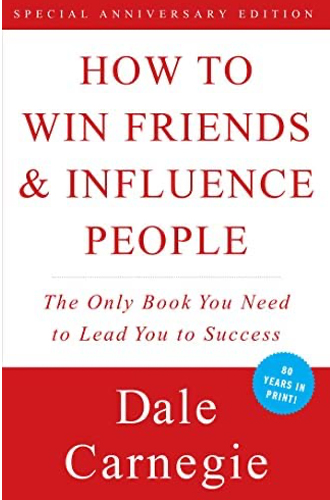BLOG
The Four Digital and Innovation Trends Unlocking New Growth Opportunities in Southeast Asia
From digital healthcare to social commerce, new internet users are ready to embrace technology.
Over 40 million people in Southeast Asia (SEA) went online for the first time during the pandemic, bringing active Internet users in the region to 400 million [1], according to Google’s e-Conomy SEA 2020 report. This represents a 60% increase from 2015, and a 70% internet penetration rate of the region’s 580 million population, as well as a $100 billion worth of Internet economy.
In the past year, we have seen many new norms and many changed customer habits. To better understand the trends that have transformed the digital landscape in SEA and the implications for brands to maintain their relevance, we interviewed four key marketing and digital experts across the region.

Four Trends Shaping the Future of Digital and Innovation
1. Growth of Digital Healthcare
The pandemic exposed the fragile public healthcare system and scarcity of healthcare professionals for patients in underserved and rural areas. To fill this care gap, many are turning to telemedicine, increasing its demand. Two examples of the surge of telemedicine are Indonesian start-ups Alodokter and Halodoc, which link patients with physicians for online health consultations all from the comfort of their homes. These start-ups and many others have shown robust growth as citizens in remote, rural areas are becoming more aware of their need for quality healthcare and as governments begin to recognize telemedicine start-ups as an official care resource for citizens.
Looking more broadly, we expect the continued growth of digital healthcare solutions as health and wellness remains a top priority for customers, impacting their choices around self-care and their expectations towards their interactions with brands.
“The pandemic made us rethink the real part of our business – helping people get their health checked and making sure they were claiming right. And so, we realized that we need to enable all of our sellers to proactively reach out to people digitally.”
– Ms. Jenn Villalobos
2. The Rise of Contactless and Digital Payments
Contactless became a new norm during the height of the pandemic. As a result, new, contactless services have seen substantial growth and adoption by major brands across SEA. For example, local food delivery companies such as GrabFood have evolved their services to better address customer needs, by giving customers the flexibility to schedule contactless delivery in advance.
Alongside contactless services, digital payments are expanding as customers increasingly forgo cash to avoid physical contact. This trend was accelerated when brands increased their implementation of cashless payments for their services. This led to non-cash transactions growing rapidly across the region. For example, GCash by Mynt and PayMaya by PLDT expanded to enable digital contactless payments in public taxis in the Philippines. In Vietnam, the number of mobile payment transactions grew by nearly 200% during their lock-down period. Additionally, e-wallets such as ZaloPay, Momo, and Grab-backed Moca also experienced high rates of adoption during this period.
“People were looking for an opportunity to do banking very easily but they wanted to avoid physical interaction as much as possible, so we launched a new digital, mobile banking offering with a much better user experience and faster transaction speed than before and compared to other banks.”
– Mr. Pahala Mansury
3. Shift Towards Social Commerce
As COVID-19 disrupts most supply chains and traditional retail channels, many SEA customers have experienced or adopted new retail channels to a varying degree. An area that largely benefited from this opportunity is social commerce. Social media has become a one-stop platform where customers can be influenced by a variety of content and subsequently shop directly or through chat rooms on Facebook, WhatsApp or Line. In fact, social commerce accounted for about 44% of SEA’s $100 billion Internet economy in 2020[2].
To serve this growing demand and overcome challenges from the pandemic, we are not only seeing major brands but also micro-businesses adopt and integrate social commerce into their business models. One example is Singapore’s Infocomm Media Development Authority. They’re helping stalls in wet markets that are traditionally cash-only and have zero online presence online. This initiative has enabled customers to order their groceries from mom-and-pop shops remotely via Facebook and enjoy same-day delivery to their homes. We expect to see social commerce become an increasingly common practice among brands to grow their relevance and strengthen trust among customers.
“I would say social commerce is what makes a brand more relevant because it’s all about building community and trust. This is even more so in Southeast Asia.”
– Ms. Pinky Yee
4. Emergence of the New Experiential Customer
The pandemic has led to stay-at-home restrictions that forced customers to live their lives, including working, shopping, exercising and entertaining, all from home. Personalized digital experiences that seamlessly fit into the customer’s individual home routines have become increasingly important as they have fewer opportunities to interact with products and services physically. Even as stores re-open, we are seeing brands adjusting to the new normal at home by complementing their services.
For example, Indonesian ride-hailing brand GoJek accelerated the launch of GoPlay, a streaming entertainment service that offers locally personalized content such as Gossip Girl Indonesia. The growing pool of customers demanding personalized experiences at home has pushed brands to reinvent their offerings. Luxury, healthcare, food and beverage and educational experiences, for instance, are increasingly integrated into the stay-at-home lifestyle.
“As the outdoors are declining in terms of relevance, brands need to continuously think about how they can generate content that is relevant and entertaining to that family, to that side of the home lifestyle as they spend more hours at home.”
– Mr. Pahala Mansury
How to Unlock New Value to Win in SEA
The above trends create a wealth of opportunities for brands to innovate and unlock value. During times of disruption, brands need to adopt a digital transformation and innovation agenda that is both human-centric and digitally powered to align employees, customers and communities around a shared purpose and vision. While most companies turn to technology-driven optimization, technology alone does not drive the wheel of transformation, but rather, we must use technology to enable changes across all areas of the business from customer experience to marketing and sales to organizational culture in order to unlock uncommon growth.
“Instilling innovation from inside out allows companies to adapt quickly to evolving customer needs and get ahead of other competitors.”
– Mr. Alvin Neo
- Customer experience transformation must begin from a human perspective, focusing not just on users but also business operators responsible for maintaining and improving the experience. Singapore Airlines leveraged artificial intelligence (AI), customer data and blockchain technology to deliver more personalized end-to-end experiences across its channels. As a result, Singapore Airlines was able to consistently outperform key competitor, Emirates, with the highest customer satisfaction (87%) [3]
- Businesses need to reinvent marketing and sales by embracing customer-data strategies and omnichannel approaches to grow market share and increase loyalty and customer value. In Thailand, the iconic tricycle-riding ice cream vendor, Wall’s Man, was elevated into a new-world phenomenon by creating a new, mobile-activated service and interactive messaging with GPS tracking. Customers order ice cream by simply sending a sticker to Wall’s Man’s chatbot online. The customer data collected through its services allows Wall’s Man to manage his inventory better while providing insights through customer profiling. Despite the economic turmoil and entrance of new players, sales increased by 4% within the first two months of activation. Currently, one of three Thai Line users has joined Wall’s Man Line account, allowing a whole new generation to experience the joy of delivered ice cream [4].
- It is also crucial for companies to approach the transformational agenda from the inside out by advancing cultures that excite top talent and continuously fuel innovation. The culture of innovation is instilled within Tokopedia, an Indonesian technology company specializing in e-commerce. Tokopedia has built a winning learning and development (L&D) ecosystem that is digital, accessible and gamified. Tokopedia’s effort in L&D was recognized by winning the “Best Companies to Work for in Asia” Award in 2020 [5]. Success in L&D has also been translated into business, with Tokopedia sustaining its position as a trailblazer in Indonesia and its CEO, William Tanuwijaya, won the Innovation Leadership Achievement Award in Indonesia from The Asian Banker in 2021.
References:
[1] According to the e-Conomy SEA 2020 research done by Google Inc., Temasek Holdings Pre. and Bain & Co., 2020 https://storage.googleapis.com/gweb-economy-sea.appspot.com/assets/pdf/e-Conomy_SEA_2020_Report.pdf
[2] The e-Conomy SEA 2020, https://storage.googleapis.com/gweb-economy-sea.appspot.com/assets/pdf/e-Conomy_SEA_2020_Report.pdf
[3] According to Roy Morgan, Jan 2020, https://www.roymorgan.com/findings/8253-csa-results-november-2019-international-airline-satisfaction-202001192349
[4] According to The State of Digital Transformation in SEA
[5] According to Nanang Chalid Blog Post, Dec 2020, https://www.nanangchalid.com/post/start-with-why-a-winning-l-d-story
FINAL THOUGHTS
The COVID-19 pandemic has accelerated and transformed the digital landscape in SEA, presenting opportunities for uncommon growth in this diverse, fast-growing and digitally developed region. The key to unlocking more value is approaching innovation not just by applying new digital technologies, but more importantly, innovating from the inside out across all dimensions of the organization.
To learn more about how to unlock uncommon growth in your organization, contact us today.


































